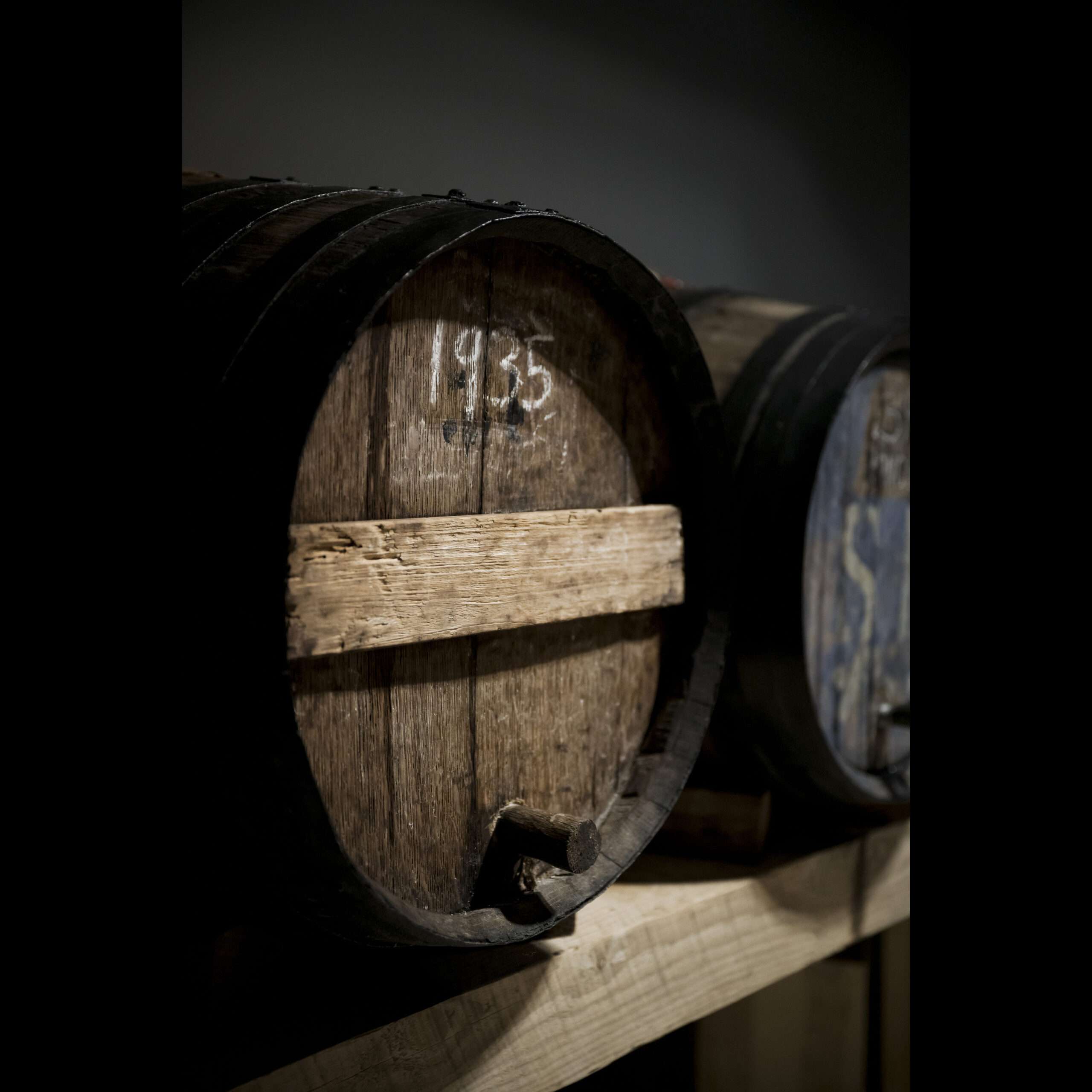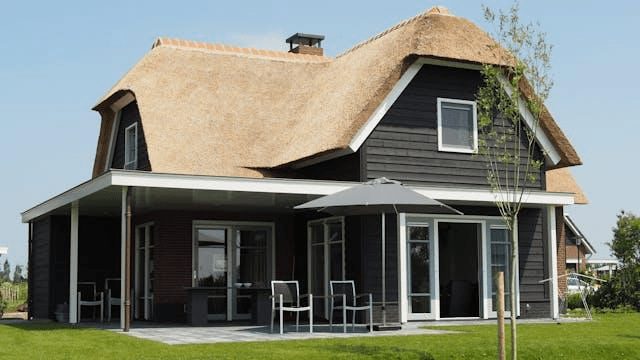In the captivating world of winemaking, oak barrels act as silent artisans, shaping the very soul of the wine within. As we uncork the secrets behind this alchemical transformation, let’s explore how different types of wine barrels, especially those crafted from oak, leave an indelible mark on the taste and character of the wines we savor.
1. Oak Barrels – The Maestro of Flavor
Oak barrels play a critical role in winemaking. Their purpose is to impart aromas and flavors while softening wines by allowing oxygen into the barrel and allowing certain chemical transformations (such as turning tart malic acid into creamy lactic acid) that make wines creamier in texture.
The type and degree of toasting applied to oak have a significant impact on the flavor extraction process. Various oak species contribute distinct characteristics such as vanilla, coconut, chocolate, and toffee notes. Also, the degree of toasting has an impact on how many mouth-drying tannins the barrel imparts.
a. The Oak Advantage
– An oak barrel for aging stands out as the preferred vessel.
– The porous nature of oak allows for a gentle exchange between wine and wood.
b. Oak Species Matter
– Different oak species bring diverse flavors to the table.
– The three main types are French, American, and Hungarian oak, each lending its unique characteristics.
2. French Oak Barrels – The Elegance of Tradition
The area is another factor, as oak from different regions produces different types of wine barrels.
French oak sourced from Allier forests is renowned for its tight grain, resulting in delicate flavors when used in the fermentation process for wines. On the other hand, Troncais forest features coarser textures that lend more intense flavors than its Allier counterpart.
– Characteristics: Subtle, nuanced, with hints of vanilla, spice, and finesse.
– Ideal for aging Bordeaux and Burgundy wines, adding elegance and complexity.
3. American Oak Barrels – The Bold Statement
As a winemaker, choosing barrels for specific wines can be a pivotal decision that requires careful consideration to achieve optimal results. Not only must one determine species of wood and barrel toasting techniques to select an aging vessel that best complements flavors and textures for their product, but one must also consider how long wine should stay aged in said vessel for optimal aging results.
– Characteristics: Robust flavors of coconut, dill, and sweet notes.
– Ideal for aging powerful wines like Zinfandel and Cabernet Sauvignon, imparting a bold personality.
4. Hungarian Oak Barrels – The Balance Seeker
Hungarian oak barrels (known as Gonczi in Hungary) offer winemakers a powerful tool for shaping both mouthfeel and structure in their wines without altering fruit or terroir elements. Hungarian barrels for wine are known for being lighter in toast than their French or American counterparts, offering greater complexity with smoother finishes and greater finesse.
– Characteristics: A balance between French and American oak traits.
– Ideal for various wine regions, offering versatility in enhancing both reds and whites.
5. Oak Barrel for Aging – The Transformational Journey
Oak barrels are not just decorative vessels; they play an integral part in winemaking by imparting unique sets of flavor characteristics and aromas during their aging and maturation process.
Winemakers select the type of wood barrel based on various criteria, including the wood species, origin, grain tightness, and the extent of toasting or charring. Toasting or charring causes compounds in the wood surface to release that add a variety of flavors, such as vanilla and coconut, to wines stored inside it.
Barrels for wine add oxygen and soften its sharp edges through oxidation and evaporation of liquid, all of which contribute to shaping its taste and structure. For wines with lighter and fruitier characteristics, winemakers may choose smaller oak vessels to interact with the wine, providing softer tones and less impactful oak flavor components.
a. Extracting Flavors
– The aging process involves the slow extraction of compounds from the oak into the wine.
– Compounds like tannins, lignins, and lactones contribute to the taste and mouthfeel.
b. Microoxygenation
– The porous nature of oak allows a controlled amount of oxygen to interact with the wine.
– This microoxygenation process softens tannins and enhances aromas.
6. Used Oak Barrels – A Second Act of Complexity
Longer contact with oak wood has the effect of changing the sensory properties of wine and spirits as its phenolic compounds are absorbed by these beverages. Tannins, which are phenolic compounds, contribute bitterness, astringency, and complexity to the flavors of wine. Their release depends on how heavily or lightly “toasted” (charred) oak was treated prior to creating wine.
Other chemical compounds, like ellagitannins, contribute significantly to wine’s aroma and texture sensations – such as mouthfeel and astringency – as well as color stability and modulation of astringency levels. They’re responsible for color stabilization as well as helping control its severity.
a. Softening Tannins
– Used oak barrels, having imparted flavors in their first use, continue to influence wine.
– They often soften tannins in subsequent uses, contributing to a smoother mouthfeel.
b. Complex Aromas
– The aromatic compounds retained in used oak barrels add layers of complexity to the wine.
– Winemakers seek the balance of oak influence in subsequent vintages.
7. Barrels for Wine – A Symphony in Wood and Grapes
Oak barrels add an abundance of character before the liquid even hits your lips, from toasty whispers to the allure of vanillin. Winemakers leverage the inherent qualities of oak to create an aromatic tapestry that is both sophisticated and irresistible. Barrel aging allows oxygen to gradually enter the wine, leading to slow oxidation and softening of tannins while simultaneously encouraging chemical reactions between anthocyanins and proanthocyanidins to stabilize color stability and modulate astringency.
Winemakers continually evaluate the characteristics of barrels, from species, source, and region to tightness of grain and degree of toasting. Different Quercus species from varying regions offer distinct aromas that influence aroma, palate feel, and structure.
a. Crafting the Harmony
– Winemakers carefully select the type and origin of oak barrels to match their wine’s style.
– The choice is a delicate dance, aiming for a harmonious marriage between wood and grape.
b. Beyond Oak – The Art of Blending
– Some wines undergo a blending process, combining wines aged in different types of oak barrels.
– This art of blending allows winemakers to achieve a balance of flavors and textures.
Conclusion
Winemakers frequently use oak barrels to enhance the complexity and mouthfeel of their wines, using interactions between phenolic compounds found in wine and the chemicals present in wood for greater complexity and aromatic complexity. These reactions release aromas such as vanilla, nutmeg, cloves, etc.
Oak barrel-aged wines also benefit from chemical reactions occurring in the wood, including malolactic fermentation processes that turn tart malic acid into smoother-tasting lactic acid (malolactic). This allows creamier and smoother wines to develop over time.
As we savor the exquisite notes of our favorite wines, let’s toast to the unsung heroes – the oak barrels that orchestrate this symphony of flavors.
French oak imparts delicate flavors with its tight graining from Allier forests, while American oak makes bold statements. Each type of oak contributes to the symphony of flavors, elevating wine into a sensory journey rather than just a beverage. The alchemy between oak barrels and wine is a testament to the timeless artistry of winemaking, where wood and grape dance together to create something truly magical. Cheers to the transformative power of an oak barrel for aging wine and the richness they bring to our glasses!









